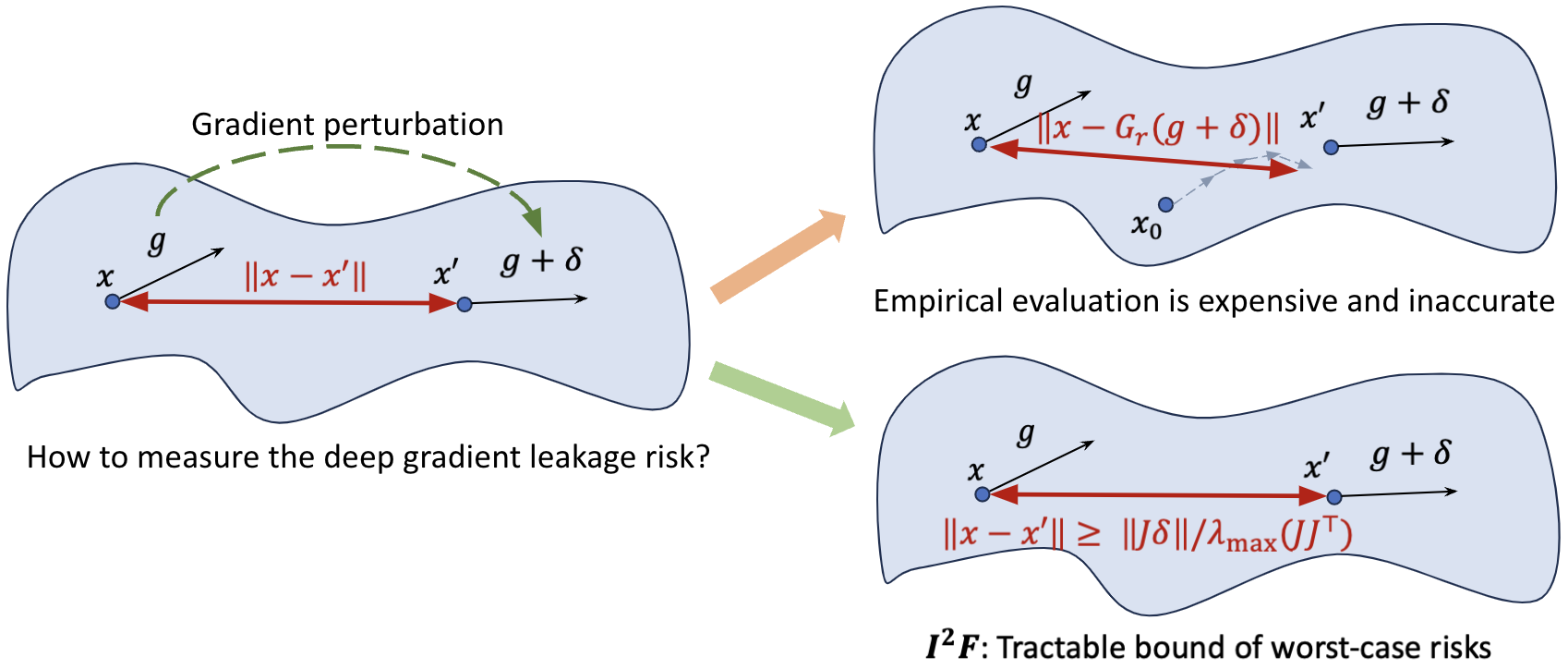Official PyTorch Code for Paper: "Understanding Deep Gradient Leakage via Inversion Influence Functions" Haobo Zhang, Junyuan Hong, Yuyang Deng, Mehrdad Mahdavi and Jiayu Zhou, NeurIPS 2023.
Deep Gradient Leakage (DGL) is a highly effective attack that recovers private training images from gradient vectors. This attack casts significant privacy challenges on distributed learning from clients with sensitive data, where clients are required to share gradients. Defending against such attacks requires but lacks an understanding of when and how privacy leakage happens, mostly because of the black-box nature of deep networks. In this paper, we propose a novel Inversion Influence Function (
To calculate compute_exact_bound() or I2F_lb() in ./utils.py. Please check ./demo.py for an example about how to use the function.
import torch
from utils import I2F_lb
# get model, images, labels
noise = [1e-2 * torch.randn_like(p) for p in model.parameters()]
estimated_DGL_risk = I2F_lb(model, images, labels, noise)Note you don't need to really run the inversion process. Just input your model, data, and noise into the function, then you can easily get
Use conda env create -f environment.yml to create a conda env and
activate by conda activate I2F. Major dependencies include
pytorch, torchvision, wandb, numpy, lpips.
Here we provide several demos of results in the paper.
You can change the arguments model and dataset to plot the RMSE vs. I2F_lb curve for different models and datasets.
-
I2F with Gaussian noise:
- Run
python3 ./demos/codes/bound_I2F.py --baseline run --model ResNet18 --dataset cifar10.
- Run
-
I2F with gradient pruning (Fig. 13 in the paper):
- Use wandb to sweep
./sweeps/bound-pruning.yaml.
- Use wandb to sweep
-
Inversion with different eigen vectors as the gradient noise (Fig.5 in the paper):
- Run
python3 ./demos/codes/invert_eigen_vectors.py --baseline run --model ResNet18 --dataset cifar10.
- Run
-
I2F with different model initializations (Fig. 7 in the paper):
- Use wandb to sweep
./sweeps/invert-initilization.yaml.
- Use wandb to sweep
-
The effect of different
$\epsilon$ (Sec. 4 in the paper):- Use wandb to sweep
./sweeps/tune-epsilon.yaml.
- Use wandb to sweep
Some sample output log files are provided in ./demos/output/ with the corresponding hyperparams. A line of sample output is JtDelta: 0.01304 | MaxEigenValue: 2.716 | MSE: 0.0002234 | vgg: 0.01557 | SSIM: 0.9932
This research was supported by the National Science Foundation (IIS-2212174, IIS-1749940), National Institute of Aging (IRF1AG072449), and the Office of Naval Research (N00014- 20-1-2382).

